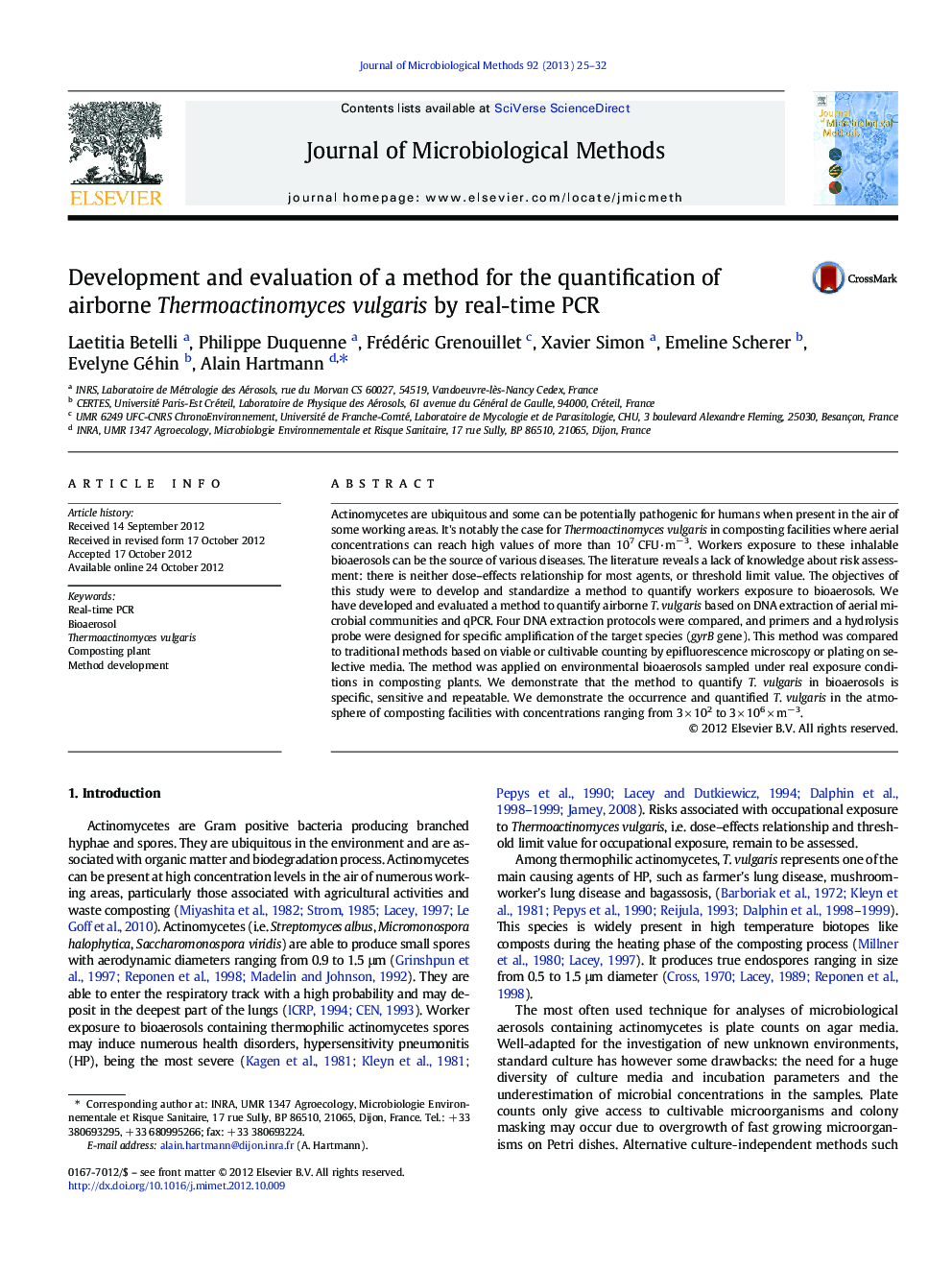| Article ID | Journal | Published Year | Pages | File Type |
|---|---|---|---|---|
| 2090131 | Journal of Microbiological Methods | 2013 | 8 Pages |
Actinomycetes are ubiquitous and some can be potentially pathogenic for humans when present in the air of some working areas. It's notably the case for Thermoactinomyces vulgaris in composting facilities where aerial concentrations can reach high values of more than 107 CFU·m− 3. Workers exposure to these inhalable bioaerosols can be the source of various diseases. The literature reveals a lack of knowledge about risk assessment: there is neither dose–effects relationship for most agents, or threshold limit value. The objectives of this study were to develop and standardize a method to quantify workers exposure to bioaerosols. We have developed and evaluated a method to quantify airborne T. vulgaris based on DNA extraction of aerial microbial communities and qPCR. Four DNA extraction protocols were compared, and primers and a hydrolysis probe were designed for specific amplification of the target species (gyrB gene). This method was compared to traditional methods based on viable or cultivable counting by epifluorescence microscopy or plating on selective media. The method was applied on environmental bioaerosols sampled under real exposure conditions in composting plants. We demonstrate that the method to quantify T. vulgaris in bioaerosols is specific, sensitive and repeatable. We demonstrate the occurrence and quantified T. vulgaris in the atmosphere of composting facilities with concentrations ranging from 3 × 102 to 3 × 106 × m− 3.
► Thermoactinomyces vulgaris detection in bioaerosols by real-time PCR ► Occurrence of Thermoactinomyces vulgaris in the atmosphere of composting plants ► Validation of a detection method using experimental bioaerosols ► Comparison between culture-based detection methods and molecular detection methods
